The Oxford English Dictionary may have given up on the strict meaning of the word ‘literally’, accepting that its use as a point of emphasis has become so widespread as to modify its very nature, but we can still say in the classical sense that Lightweight wheels are literally space-age. With composites knowledge shared and absorbed from the company’s space arm and its work on the European Space Agency’s Copernicus Sentinel program, Lightweight is in another galaxy when it comes to the technical precision of its wheels and the carbon fiber research that goes into them.
We've been riding Lightweight wheels since Above Category's earliest days. During that time, we've witnessed the German company stay true to its roots, making each wheel in-house by hand, never compromising on its principles or taking the easy route. But it's fair to say that a lot of people don't know why Lightweight wheels are so special. So to set the record straight, we recently sat down with Matthias Wissler from the Lightweight family to talk about the brand's history, its space projects, why not all carbon fibers are the same, and much more.
Photos courtesy of Lightweight, and Dominik Rukat.
__________________________________________
Hey Matthias, good to see you.
You too, Pete.
Is that a cow I see in the background?
It sure is. I'm at my family's farm close to Stuttgart. My grandpa was a farmer. He started it 50 years ago, and it was always my father's great passion. Initially, it was a side project, and then it grew and grew. Now that my father's doing a little less at work, which for him means only doing ten hours a day, rather than the sixteen of before, he has a bit more time to invest in the animals again.
Switching from bovines to bikes, is Stuttgart where Lightweight is based?
Yes and no. We have two production plants. One is near Stuttgart, about a half hour from here. The other one is in Friedrichshafen, our company's headquarters.
Few people in the bike world will know this, but Lightweight is just one part of your business. The other concerns the carbon fiber parts you create for the space industry. Do you make everything in one place?
We keep both parts of the business physically separate, but there is a significant exchange of information, knowledge and materials between the two. Around 80% of the manufacturing process for the wheels is done in Friedrichshafen, and the other 20% near Stuttgart. In the beginning, it was set up like that to avoid having everything in one factory just because there's a lot of particular knowledge in building the wheels specifically. We didn't want everything in one plant to avoid the risk of somebody coming in and learning the complete process of creating the wheels.

Most people might not be aware that Lightweight does not fully patent its wheels. Can you talk about that and the thought process behind it?
In the very early days, we thought about patenting the wheels and some of the processes, but the problem is every time you issue a patent, you need to reveal exactly how you're making the product. That would also open the door for others to find a way around the patent. That's why we decided we would not do that, at least for every single step and innovation. So for the past twenty years, we've been iterating our designs without having to reveal precisely how we bring them to life. But it is a very, very specific manufacturing process. It is still a unique approach to building wheels, and that's why we also didn't want to reveal it. To be fair, the company has a lot of engineering and carbon manufacturing knowledge. Much of this knowledge goes into the wheels and how we produce them. We didn't want to reveal the whole production process or how they're done specifically by issuing a patent.
How did Lightweight get started?
Heinz Obermayer founded Lightweight, or more accurately, produced the first Lightweight wheels in 1996. He made them in a small garage in Munich where he was working to build advanced carbon fiber cycling wheels as more or less a pet project at the request of some local cyclists. He is a very knowledgeable guy and a savant when it comes to engineering. But his manufacturing process, in the beginning, was very simple but beautifully executed. He had a small garage with his kitchen oven where he was hardening and baking two wheels, with some supplies even bought from the local hardware store!
Crikey!
Ach du meine Güte, indeed! But yes, Heinz made it work, and in the beginning, he produced up to two wheels a day.
That's a lot of wheels for one person.
It is. He had a partner, in the beginning, Rudolf Dierl. They originally started it together, and in the late 90s, the business blew up. Eventually, once the demand grew they had more than a year's wait time for their wheels.

And all from an oven in a garage. That's crazy!
The oven still works to this day! But at that time, Heinz and Rudolf were already 65 and decided they didn't want to grow the business. So they started looking for a partner. Coincidentally, we developed a carbon fiber bike frame around the same time at our manufacturing plant in Friedrichshafen, where we were already doing parts for the aerospace industry. So we thought, "Okay, we have to do something with it and see if there's potential for this carbon triathlon frame." So we got in contact with Heinz. It was challenging at the time because he was swamped and not easy to reach - but we persisted!
Eventually, we made contact and asked Heinz if we could borrow a set of his wheels for a bike show we had coming up to help showcase our frame. In the beginning, he said no, but then we tried a couple more times, and in the end, he said we could have his personal set to showcase. So we went to the Eurobike show with our frame, and everybody was obsessed with the wheels. Nobody cared for the frame! People touched the wheels and said, "Wow, I've never seen these in person, outside of the Tour de France." You must remember that at that time, Lightweight wheels were nearly all going to the pro peloton. Anyway, we realized that there was tremendous potential with the wheels. So we asked Heinz if he would consider working with us to grow the business, to expand the production. After a while, he said he would be interested because he couldn't keep up with the demand, what with getting a little older. But he only wanted to work with another family business, even though he had some offers from big corporations.
I bet.
He was adamant that he wanted his baby to grow up in another family business and didn't want to see it sold out to a big corporation.
Back home in England where I'm from, we'd say Heinz is a tinkerer. Someone who goes into their shed and designs something utterly new with very few resources. Except in England, the shed would probably blow up at some point.
Bar the shed exploding, that describes him perfectly. To this day, he comes in and says he has a new idea about how to do things. And he still works in his private garage now on wheels to see how to develop and improve the process. It's still his big passion.
Friends come to him also to repair their carbon wheels. Repairing carbon is a very specific process because once it's laid up and hardened in the oven, it has its basic structure. Once you break it in one spot, especially with our monocoque production technique, it loses its integrity. It's a highly complex process to repair, but Heinz is working on it daily in his garage.

What do you think fuels his continued interest? Was he a cyclist?
He was not a keen cyclist, but he always felt like there was a better way to do wheels. He felt there was potential for carbon fiber wheels. A few cyclist friends challenged him because they knew he was an engineer, very smart, and always looking for ways to push the boundaries. They asked him if he could produce such a wheel, a stiffer and lighter wheel, especially for competition. He was, as you said, a tinkerer. That's still what fuels him. Today, he still loves the process of engineering, of doing things better than they were yesterday.
He must have seen, in your company, the same dedication and respect for engineering, because to hand over something so immensely personal to another entity is a massive shift. What do you think he saw in your company?
There were maybe two main parts. Working with another family business was very important for him because he still liked to be part of it. He didn't want to sell the company and step away. He was pleased that we were nearby, too. He also felt, especially on the engineering part and the processes we have already or had already in our company, that we would be able to bring his company or his baby to the next level. He felt like there were good synergies when it came to engineering.
There was a lot of trust in what we did at the time. When we invited him to our factory, and he saw the satellite structures we do for the European Space Agency (ESA), he was like, "Okay, if you're able to produce these things, you're probably able to also improve on the Lightweight process with me." So he was happy with that. But yeah, seeing what we were doing in other industries helped him make his mind up. But initially, it was not easy for him because when we told him we wanted to see his barn where he produced the wheels, he said no - not before we had a contract! Imagine, we had no idea what was in there and how he made his wheels, but we trusted him as well as he trusted us.
Eventually, when we came to see his garage manufacturing process, we were stunned because, with what he had, it was just mind-blowing what he did with his resources. For the first couple of months, all we did was try to understand his process because he didn't write anything down. When you put carbon wheels in the oven to harden them, you need a specific temperature. We asked Heinz what his temperature was, and he said he didn't know. It was all done by feel!
If I try to make coffee that way, it ends up a disaster.
Me too! So anyway, our engineers went to his garage, and we equipped everything with sensors. We went with a stopwatch and monitored how he does everything. The incredible part is that even though he didn't write his process down or measure it, his wheels always came out perfectly. He had this in him, it was just incredible to see.
That reminds me of Nikola Tesla's unique approach to product design. When someone asked him, "Why don't you build prototypes?" He said something like, "Build prototypes? Why would I need to do that? I've already gone through 20 prototypes in my mind. When I make something, it's perfect."
There are people like that, and I think Heinz is one of them. And he still comes to exhibitions. He doesn't speak much English, but every time there are customers from overseas, he comes there and takes pictures and tries to talk to them. He's a super nice guy.

It must have been quite a challenge not only to take on production but move forward, creating new models while retaining the brand's DNA and sensibility.
Yes, it was a challenge. In the beginning, Heinz Obermayer only made tubular bike wheels. Most of these went to professional cyclists, who knew how to handle them and how to brake very precisely. So in many respects, the wheels didn't have to be as robust as they needed to be for the wider cycling audience.
That makes sense.
So we had several challenges. We had to improve the process in terms of the robustness, and heat resistance of the brake track. When it came to new models, of course, the big adjustment we still believe in today is that the Lightweight monocoque way of building wheels is unique and brings unique benefits to the customer.
Can you talk about those benefits and the Lightweight process in general?
Sure. When you build a wheel with our monocoque method, there's little to no flex. Everything you input into the system as power stays as power because all of the individual parts, the rim, the spokes, and the hub are connected and laminated into what is essentially a one-piece design - a monocoque. You can't take out a spoke or the hub shell. It's all manufactured into one piece. That's why Lightweight wheels have incredible stiffness values and don't flex.
The alternate approach, then, is separate rims, spokes, and a separate hub, all connected mechanically?
Exactly. In terms of why our wheels cost what they cost, it's a combination of the materials we use and the manufacturing process. Within our company, we use 50 different sorts of carbon fibers across all industries, including our space agency projects. A lot of these fibers go into Lightweight wheels. And it bears emphasizing that not all carbon fibers are equal. There are fibers few have access to or can test to prove their worth, and fibers that have no place in a premium bike wheel. However, to the user, they look the same - that's a problem!
You could say the same about anything carbon.
Exactly. Okay, so to continue talking about our process, the second important factor in making carbon fiber bike wheels is how you lay them up. To speak about our approach, each pair of Lightweight wheels takes up to 26 hours of manufacturing time. It's all manual labor and a very specific process. When you compare our approach to wheels made by other brands, you'll find they require less than half of the time to be manufactured and laced.
During our manufacturing process, each wheel requires 120 different production steps and up to 12 specialists. It's not like we have one person making the whole wheel. There are specific tasks, and we have one person that's a specialist at each. Of course, we could produce a wheel as everybody else does, but it would not have the same benefits for the customer. What we always try to explain is that when you have these first couple of pedal strokes with Lightweight wheels, when you accelerate, you really feel the difference. It doesn't matter if you're an advanced cyclist or somebody who loves to ride good wheels. When you put down power, it becomes speed. No other wheel will give you that same visceral immediacy.


As a life-long fan of science fiction, I'm keen to hear more about the impact of your space program on your bike wheels.
A good example is our disc brake wheels. We have one specific fiber that we initially used in the aerospace industry. This fiber is a very stiff high modulus fiber that we sourced for a certain project. It is incredibly expensive, but we realized it would be perfect in our spokes. The reason being, of course, is that when you have disc brake wheels, there's a lot of torque around the center. You can see this in non-monocoque rim brake wheels, which flex a little bit around the hub. And the same applies to a greater extent with non-monocoque disc brake wheels when you apply the brakes - you feel a little delay or sag until the bike stops. So by using this rather esoteric fiber in our disc brake wheels, we bolstered the torque to offset any chance of flex and remove any possibility of latency between braking and slowing down.
If you could only add aliens to the mix, that would be the perfect space meets cycling story.
Sorry to disappoint - you'll have to speak to the European Space Agency!
I can only imagine the engineering criteria you must meet to be part of a space project.
It's an exciting challenge. The precision we need to have for space projects or the aerospace industry is incredible. For example, the parts we produced for the Copernicus Sentinel satellites had to withstand forces up to 20-G, made to a precision of five microns.
That is truly stunning.
Yes, the demands were incredibly detailed and specific. But this sort of project helps us a lot when building our wheels because we have engineering teams in different industries that get together on diverse projects from both sectors. And working across such disparate industries helps us expand our knowledge and bring that knowledge and the potential of sourcing material that you get to work with in other sectors into other products.
For anyone interested, can you talk about what the Sentinel project was designed to accomplish?
The Sentinel project was established to measure the Earth's surface, which is why everything we created needed to be so precise.

Coming back to Earth for a moment, do you think we might have reached peak development in terms of carbon fiber and its application on the bike?
We certainly haven't got there yet, no. There are still innovations to make the wheels lighter, wider, and more aerodynamic. There's still room for improvement. But anything radical, for example, in recent years where we saw riders move from rim to disc or wheels that are for European standards, in the U.S., very wide, I'm not so sure. But of course, with improvement in engineering and materials, and development in general, there's always room to make things better than yesterday. We also need to keep on our toes to ensure we're looking out for new trends or what's happening next in the industry.
What are your thoughts on sustainability, making a product that lasts for a long time or can be taken apart and repurposed?
That's very important. Sustainability also means manufacturing a safe wheel, which is the most important thing you can do. To be frank, many wheels out there, or many carbon fiber products in general, are not as safe as they could be. There's still a lot of improvement across the industry because it should never happen that a part or wheel breaks or incurs damage that could cause you to hurt yourself.
That makes a lot of sense. I know Chad here has a pair of Lightweight wheels that are getting close to 15 years old, with thousands upon thousands of miles on them, and they still roll like brand-new wheels.
Haha, yes, he sends me pictures. The other aspect you mentioned is the recycling or repurposing of wheels. And naturally, it should always be the goal to make as much repairable as possible, especially when it comes to high-value items like our wheels, because you don't want to throw them away just for having a little scratch. But of course, repairing carbon fiber is a challenge, as we mentioned earlier, and we're working towards making more and more of the wheel repairable. On the other hand, in general, recycling carbon is still not easy and still in the very early days, but for sure, there's going to be improvement industry-wide on this issue. And at Lightweight, we're actively involved in moving the dial on this.
To speak to specifics, what can a customer expect from a pair of Lightweight wheels regarding reparability and support?
We have a service department in our facilities where we do the repair work all in-house. We wouldn't let another authorized shop or partner do the carbon repair work just because it's about the customer's safety. What's repairable is, for example, if there's minor carbon damage, we can fix the carbon structure itself as long as there's no breakage in the wheel. To give you a practical example, if you hit a rock or a rock gets into your spoke, and it just breaks half of the spoke, then the integrity is still there, and we could repair it. But if the damage affects the integrity of the entire wheel, we would offer a crash replacement. We also have some comprehensive insurance options if the customer would like even greater peace of mind.
That sounds great, Matthias. On that note, enjoy the farm and thanks for your time!
Thanks Pete!

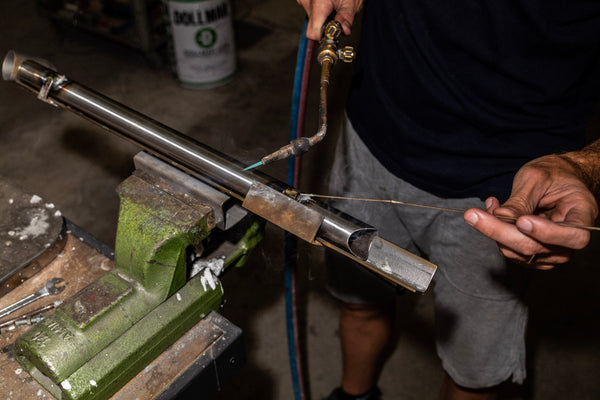
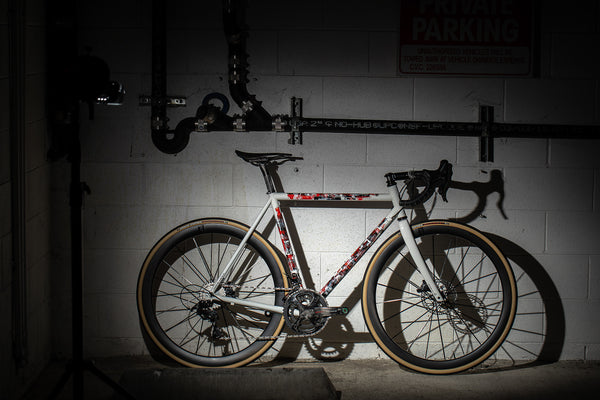
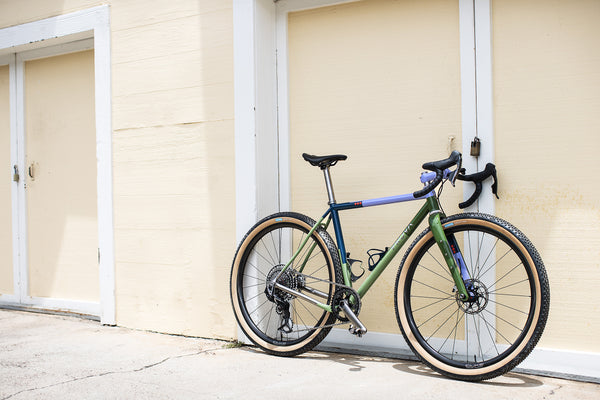
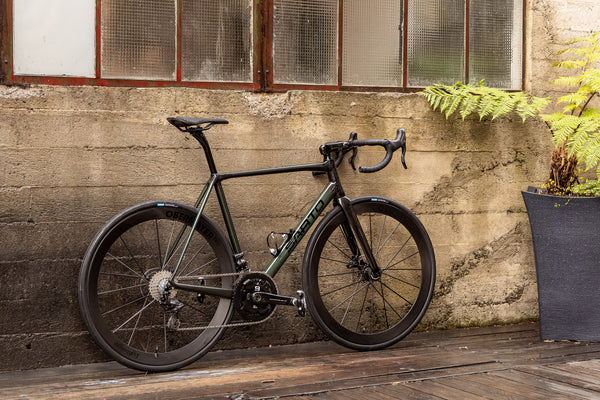
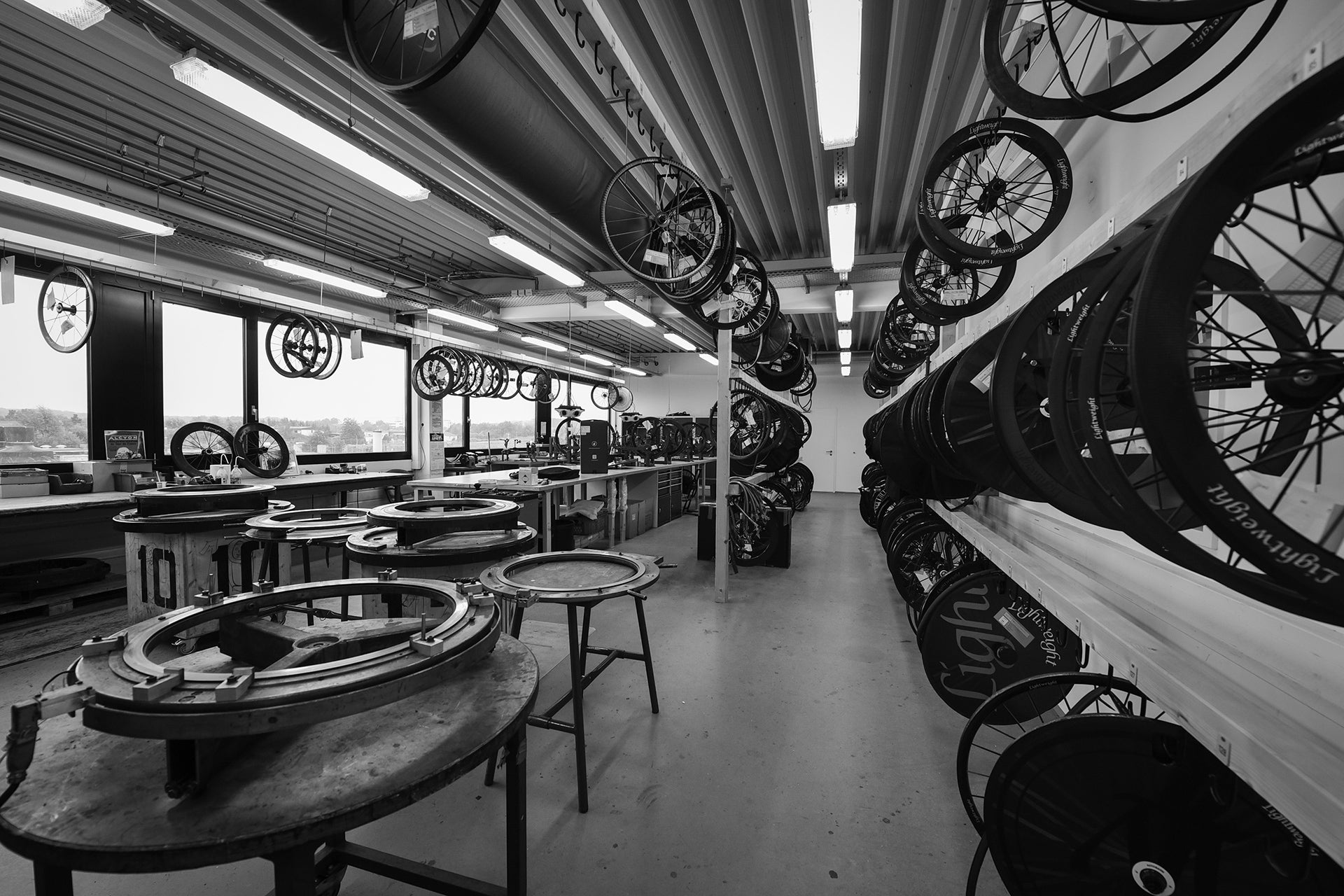




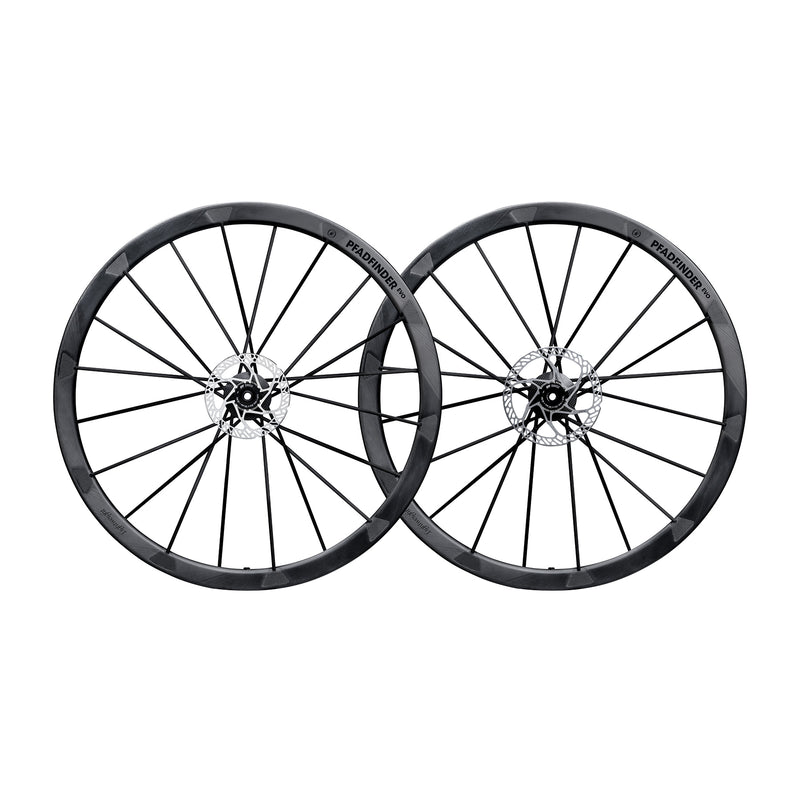
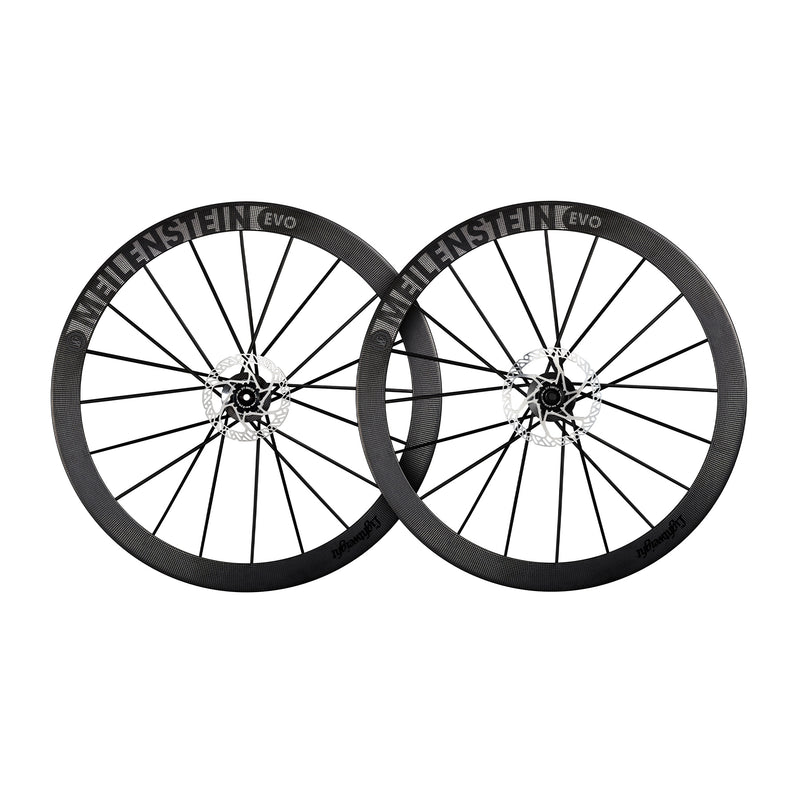
Back to Journal